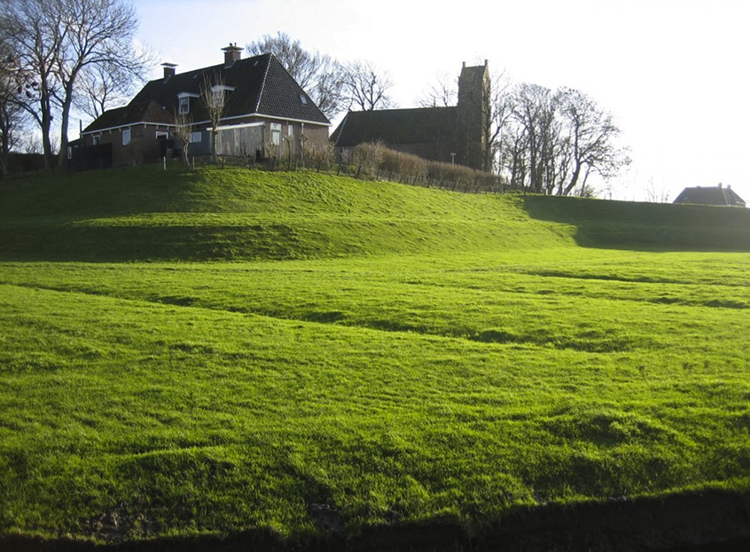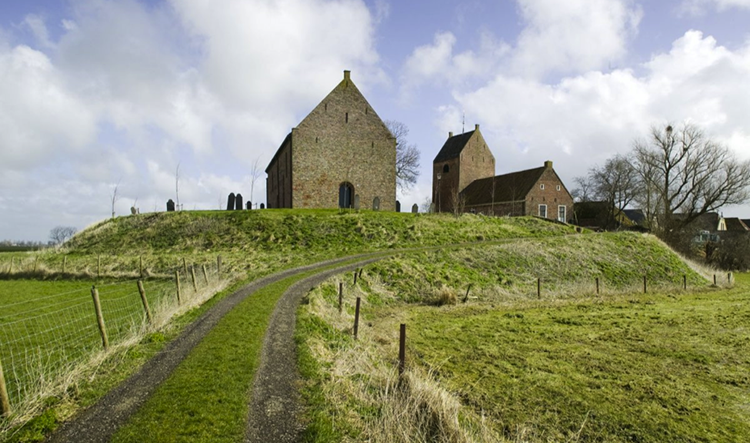The Netherlands - Terp Mounds
Early Dutch Flood Protection
Flood protection in the Netherlands did not begin with dikes, land reclamation, and monumental surge gates. When the ‘low countries’ were first settled in prehistoric times, temporary communities were established on natural beach ridges and dunes, the highest topographic features in the area. The settlements were still at the mercy of nature, and communities retreated or perished when exposed to high storm surges. From around 500 B.C. onward, settlements along the Dutch coast were constructed on terps, or artificial mounds built to above typical high tide and surge levels so that communities would no longer be destroyed by floods. In the Middle Ages, large constructed mounds enabled permanent settlement in the fertile areas near the coast and rivers. During flood periods, villagers along with their livestock would retreat to the central mound with little risk of loss of life or property. Indeed, the floods were beneficial, depositing fine sediment in floodplains that helped improve agriculture. The figures below show two persevered terps in the Friesland province of the Netherlands. The terp mounds were a very resilient system against flood protection. For small village populations, terp-building was a great example of smart building. Important structures, such as dwellings and churches, were sited so that vulnerability to flood hazards was greatly reduced, while agricultural fields that could be flooded without significant damage were allowed to be inundated. With sufficient warning, loss of life and property (including valuable livestock) could be virtually eliminated by taking refuge on the terp, while natural processes that encouraged siltation to counter subsidence were not interrupted.


